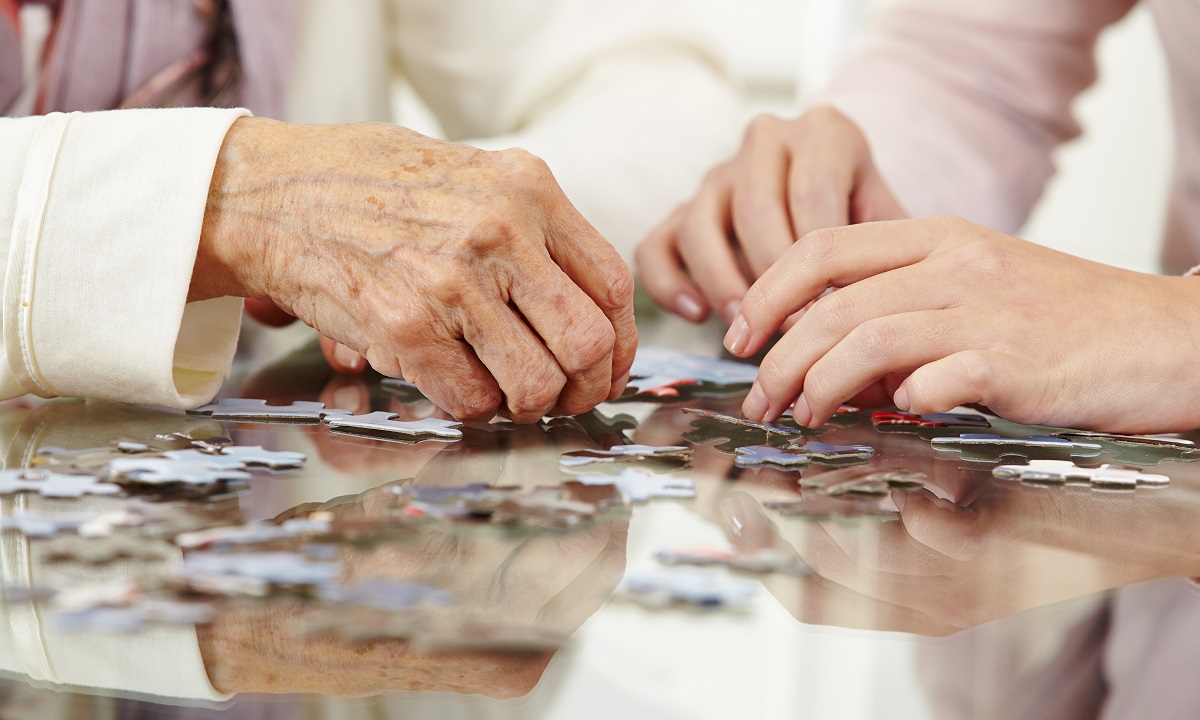How to ensure stairs are safe for someone with dementia
Find out all you need to know to prevent falls and accidents on stairs and steps in the home
Don’t panic
It’s probably the area in the house that you worry about most. After all, falling down the stairs can cause serious injury. If you have dementia a trip or fall, even if it doesn’t cause much physical harm, can shatter your confidence and leave you feeling more reliant on others. But the good news is that there are lots of ways to prevent any of these disaster scenarios from ever happening.
Did you know? Dementia can affect a person’s depth perception, which can mean they have difficulty finding or stepping onto steps correctly. This can have a real impact on their ability to walk up the stairs to get to a bathroom or bedroom.
Here’s how to protect them:
1. Make stairs easier for them to see
If your stairs are all carpeted in one colour (most are) stepping onto them can be quite confusing for your loved one because dementia can affect parts of the brain that deal with depth perception and colour contrast. This means that it’s much harder for them to detect the slight distinction in colours or shadows on the tread (where you place your foot) and the riser (the part of the step that’s at a right angle to the tread), than it is for you. Sort it by:
– Attaching some coloured electrical tape to the edge of the step tread so they can easily see it and have a better sense of perspective.
– Alternatively, attach contrasting coloured electrical tape or card to the vertical riser of each step.
– Paint outdoor and front door steps with a white trim will make them more noticeable for people.
2. Think about ramps
Small numbers of stairs or the odd step can throw up just as many hazards as a full flight of stairs, often because they’re less noticeable.
– Ramps can be a useful addition to cover up steps or provide an alternative route to walk down. They’re especially useful for people who need mobility aids to get around.
3. Get rid of trip hazards
Make sure stairs are as safe as possible by removing anything that could get in the way and cause trips or falls.
This could include items left on the stairs to go to the rooms upstairs, rugs or threadbare carpets that could catch people as they’re walking up or down them.
4. Consider handrails and stair aids
Stairs feel much safer if you have something to hold onto. While many stairways already have a banister to hold onto, some don’t. Sort it by:
– Installing an easy grip wooden handrail. This is one of the changes that an occupational therapist might arrange after a home assessment. It may be useful if the person you’re caring for favours one particular hand when walking up stairs and the banister isn’t on this side.
– Investigating other stair climbing aids, such as special walking sticks that have a large sturdy box on the end to provide support and make it easier to step up when going up stairs, and moveable handrails.
5. Improve lighting in the hall and landing
Lighting throughout their home is extremely important, but particularly around the stairs, where trips and falls are more likely.
– Make sure there is enough strong lighting on the stairs going from top to bottom.
– If the light switch for the stairs is only accessible at one end, it could mean that it gets switched off while someone is walking down the stairs – which is very dangerous if you have dementia.
Instead, consider adding a switch that lets you turn on lights from either the top or bottom of the staircase. Make sure the switch is easy to spot by putting it on a contrasting background to the wall.
5. Is it time for a stairlift?
If mobility has become such an issue that the person you’re caring for can no longer get up stairs unassisted, they may need to get a stairlift.
– Of course, stairlifts aren’t cheap, so it’s worth weighing up the cost and seeing if there are any other alternatives first. For example, could you find space to accommodate a bed downstairs – perhaps by changing a dining room into a bedroom if stairs aren’t manageable anymore?
SHARE
Explore more




